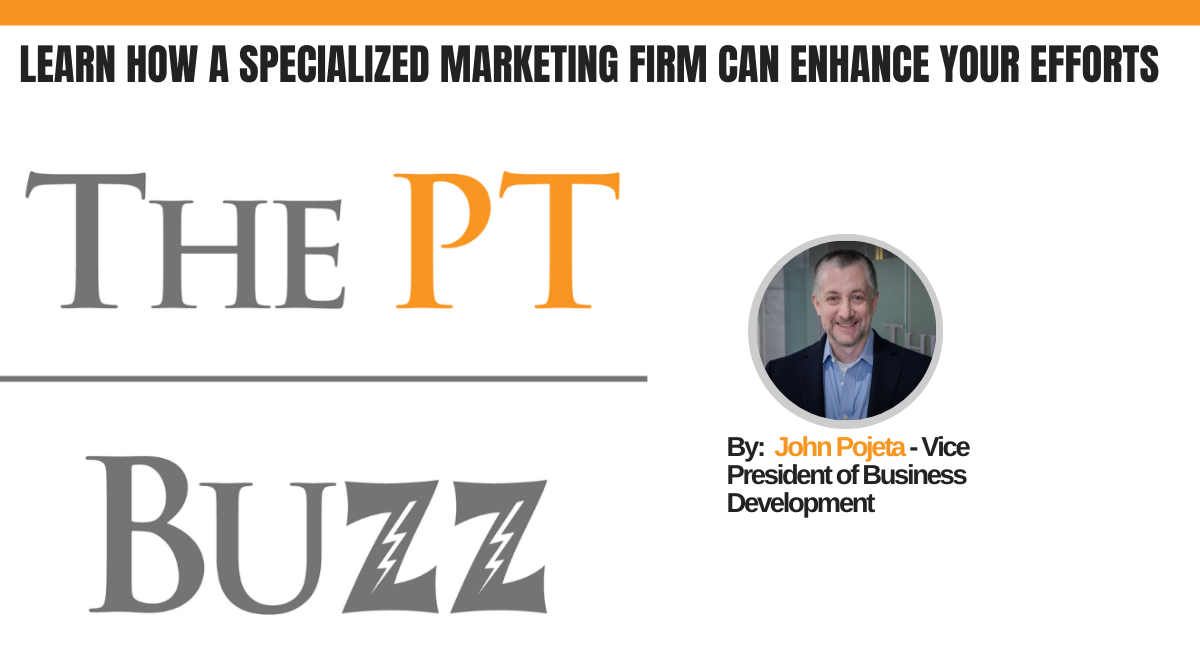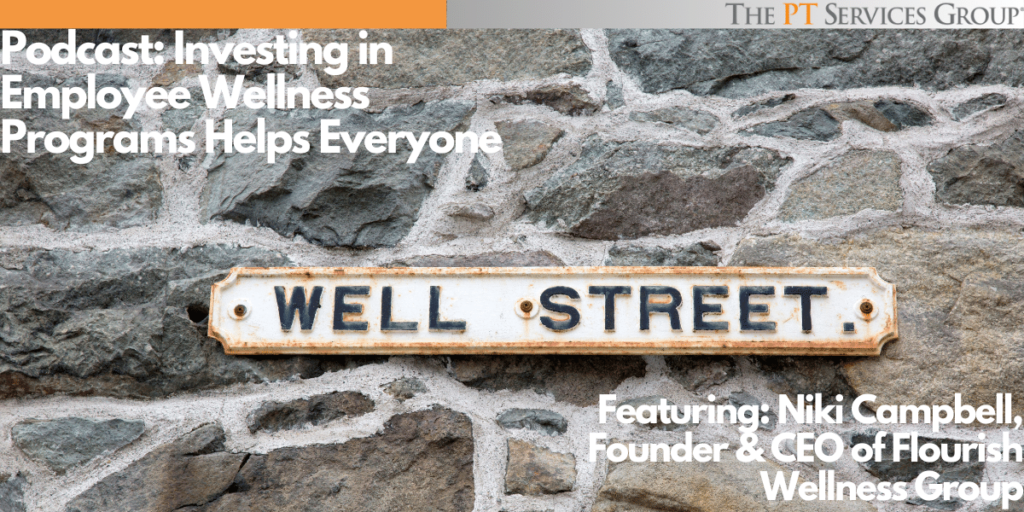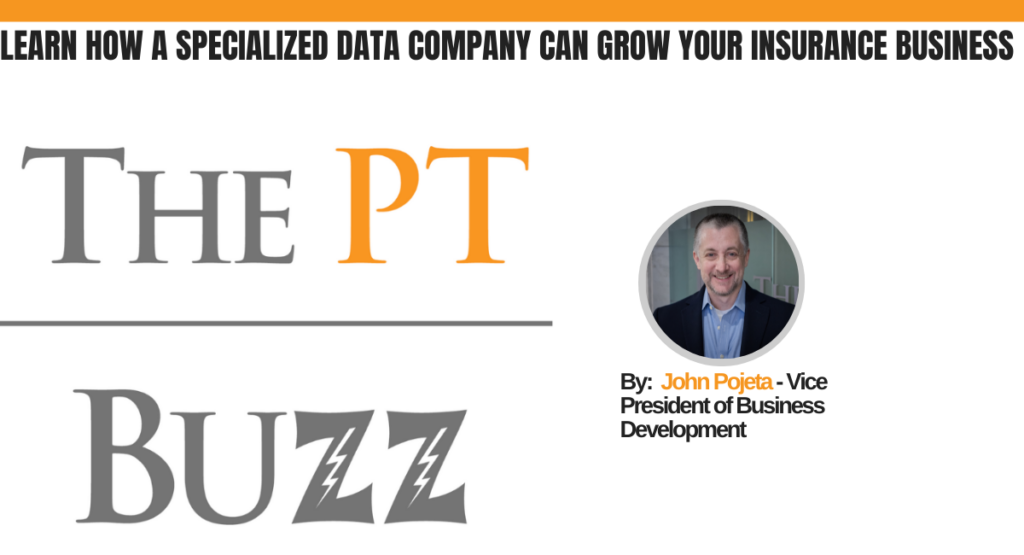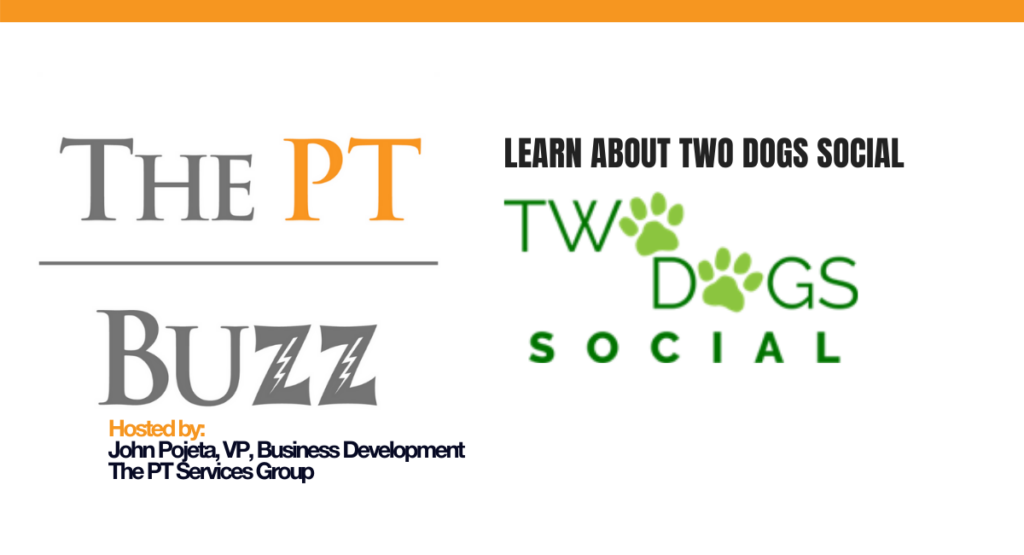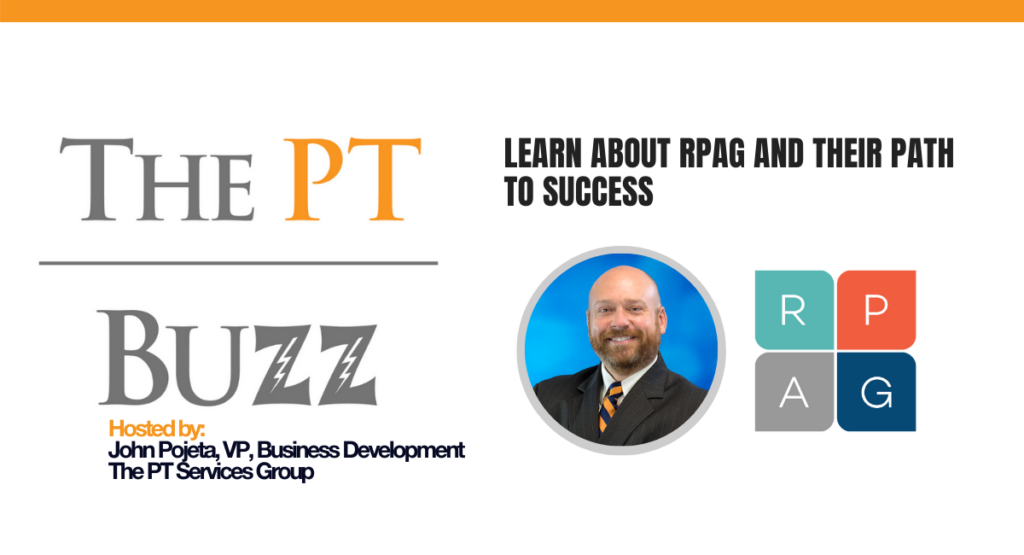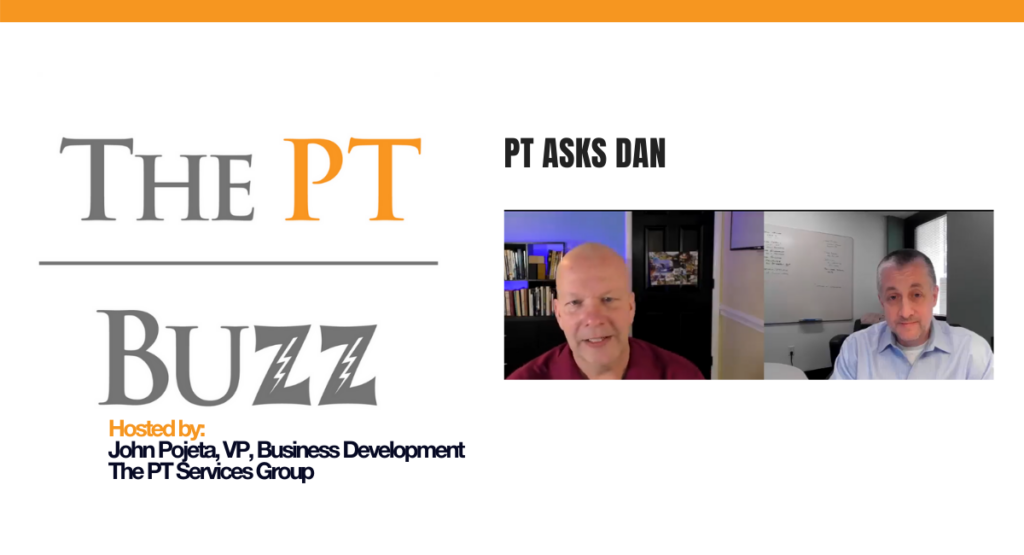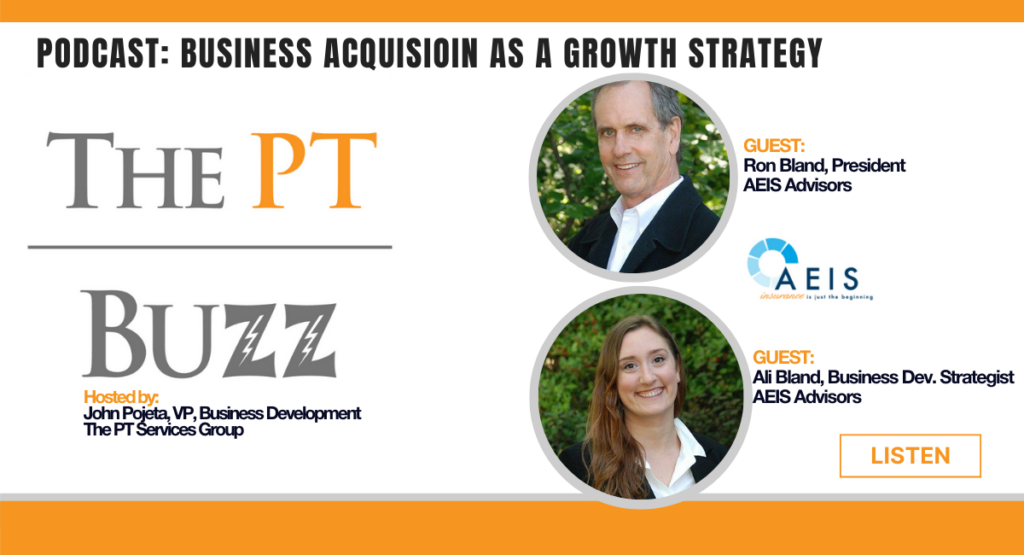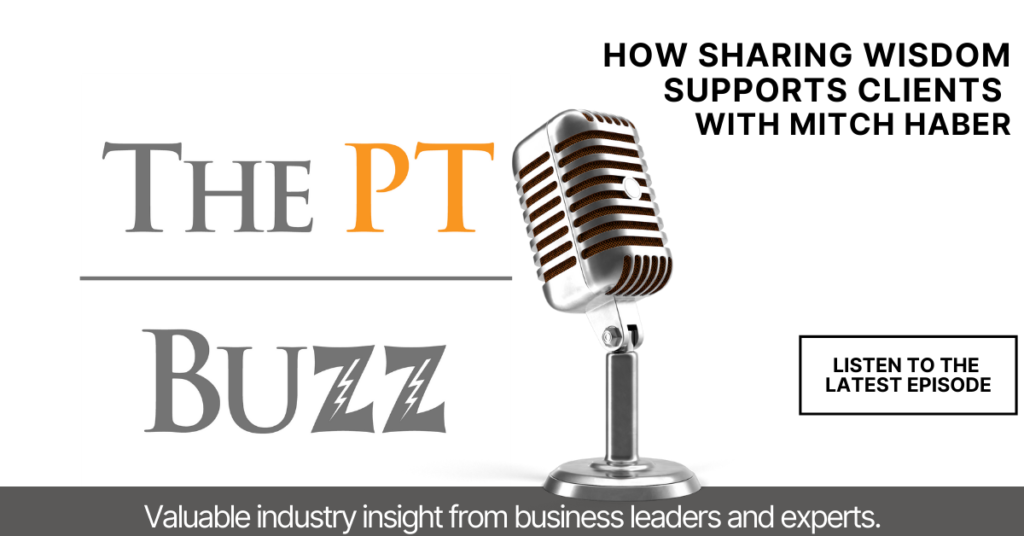PT’s John Pojeta welcomes owner of 401K Marketing, Rebecca Hourihan. Rebecca shares how her firm is uniquely positioned to help advisors with their marketing efforts. She discusses how they stay current on industry trends and regulations and details the benefits of working specialists to produce and share great content.
Where to Listen/Subscribe














Podcast Resources:
Any and all resources we mentioned in the podcast can be found here. Looking for something not here? Contact us, we’d love to help you out.
Guest Bio: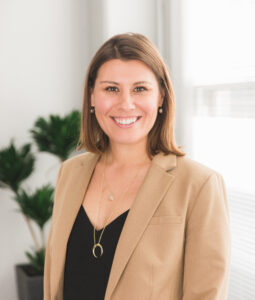
Rebecca Hourihan AIF, PPC
Founder and CMO, Avid Listener, Dog Lover, Business Motivator, ERISA Geek, New Mom
Rebecca is the founder and CMO of 401(k) Marketing, LLC in San Diego, CA. The firm helps retirement plan advisors market their expertise and build long-lasting brand awareness. The company was founded on the idea that retirement plan advisors are specialists and should promote their unique skillset.
With over 15 years of retirement plan experience and an addiction to marketing, Rebecca is skilled at developing clear paths that are simple for plan sponsors, advisors, and participants to understand. She is committed to company growth, advisor development, and collaborative improvement. Her personality is naturally enthusiastic and she attracts fun, hard-working, and ethical professionals.
Rebecca is a keynote speaker and author. She has spoken at Fi360, Advisor2X Conferences, NAPA Summit, TPA Development Conference, TRAU Master Class, Retirement Symposiums and many additional retirement plan conferences. She is a guest columnist for NAPA.net Magazine and 401(k) Specialist Magazine. She has been featured on Retireholics, 401(k) Specialist, InvestmentNews, NIPA, 401(k) Study Group, Employee Benefit News, PLANADVISOR, Plan Consultant Magazine, The Advisor’s Newsletter, and the Journal of Financial Planning.
She lives in San Diego with her family and corgi, Lola. Her hobbies include cooking, eating, drinking wine, traveling, and yoga.
Contact information
rebecca@401k-marketing.com | www.401k-marketing.com | (619)230-5464
About 401(k) Marketing
Our clients are the best professional retirement plan advisors, TPAs, and industry partners in the business. They care deeply about saving America’s retirement future. We are proud to share their voices through branding, content, and workshops. www.401k-marketing.com
Podcast Transcript:
John Pojeta: Hi everybody. John Pojeta here at the PT Services Group. Hope you’re doing well, and welcome back to another episode of the PT Buzz. And I know I joke about this every time, and this episode is no different. Very special guest, Rebecca Hourihan with 401k Marketing, and just a great wide ranging conversation on how she and her firm help support advisors with content specific to the qualified plan space.
Really easy doing business with her. Very much an expert in the field. Great connections in the industry. So she helps you get past compliance hurdles and all those things before they even become something to concern yourself with. So we talk about that element and we go all the way through what to think about in the next five years when it comes to content.
So great conversation. Hope you enjoy the episode. And rather, I guess, than me talking about our background and how we got to know each other. Rebecca, if you wouldn’t mind sharing a little bit about yourself and talking about your firm and, and have some fun elements to maybe the origin story on how you got started.
Rebecca Hourihan: You got it. And by the way, I guess, uh, by your introduction means you have a lot of great people on your podcast, so that speaks volume about. Quality of your podcast. There we go. Yeah, we do. Hi everyone. Uh, Rebecca Hourihan, founder of 401k Marketing. Uh, we help retirement plan advisors and the retirement plan industry build business awareness campaigns to help foster new plan sponsor growth.
Kind of a quick way of saying it. Sure. And then my origin story is, um, gosh, I, you know, every time I think about how long I’ve been in this space, I kind of, you know, the years keep going. Um, but I feel like , I haven’t been in it as long as I have. Um, we’re almost at 20 years, which is crazy to me. Yeah, but I started, uh, 401K marketing eight years ago, and the origin was, I was, um, working at LPL on their, uh, home office team.
Awesome people over there. And I started building out these study groups, uh, These study groups kinda like grew and grew and grew and they were about sales and marketing, business development and campaigns and what’s working and what’s not. And then all these advisors could talk to each other and learn from each other.
And one advisor in particular, Sam’s Larry Kavanaugh, he’s in Buffalo, New York. He said, Hey, Rebecca. You know, why don’t you do this on your own? Why don’t you start this on your own? And I was like, nah, nah, I can’t do that. That’s just, that’s not who I’m, I would know where to start. And so, you know, one day instead of him saying, Hey, you should do this, I go, tell me more.
How do you think I should do this? And we started the dialogue and then I was like, Hmm. What do I, what would I do first? And he goes, you know what, if you do this, and I had a, a group of folks I was really close with at LPL Awesome Advisors. And, um, after I said, told my manager who’s was such a wonderful person, um, and he said, Right.
Let’s try it. So I started 401k marketing eight years ago, and then immediately once I, you know, went through the formal process of telling LPL like, Hey, this has been a great experience. I reached out to a couple of advisors that I’ve been working with, and then five of them, like right off the bat, We’re like, yeah, you know, if you’re doing this on your own, uh, we wanna be early adopter clients.
And that kind of kick started the company, which I mean, for everyone here who’s listening, who started a company, it’s scary, right? Yeah. Like , it’s really scary. I, um, I often compare it. To, uh, that moment when you’re on the diving board, so you know, you’re, you’re gonna go swimming, so you’re, you’re on the diving board, you’re springing, you know, kinda do a little soft bounces, soft bounce, and you’re like, right, I’m gonna do this.
I’m really gonna jump now. And then that moment you’re in the air, I go, that’s what it feels like to be a business owner. When you’re doing it for the first, it’s the moment in the air and you don’t know if you’re gonna swan dive or if you’re gonna belly flop, but you know you’re going in the water.
Tap/Click to View Full Transcript
John Pojeta Hi everybody. John Pojeta here at the PT Services Group. Hope you’re doing well, and welcome back to another episode of the PT Buzz. And I know I joke about this every time, and this episode is no different. Very special guest, Rebecca Hourihan with 401k Marketing, and just a great wide ranging conversation on how she and her firm help support advisors with content specific to the qualified plan space.
Really easy doing business with her. Very much an expert in the field. Great connections in the industry. So she helps you get past compliance hurdles and all those things before they even become something to concern yourself with. So we talk about that element and we go all the way through what to think about in the next five years when it comes to content.
So great conversation. Hope you enjoy the episode. And rather, I guess, than me talking about our background and how we got to know each other. Rebecca, if you wouldn’t mind sharing a little bit about yourself and talking about your firm and, and have some fun elements to maybe the origin story on how you got started.
Rebecca Hourihan: You got it. And by the way, I guess, uh, by your introduction means you have a lot of great people on your podcast, so that speaks volume about. Quality of your podcast. There we go. Yeah, we do. Hi everyone. Uh, Rebecca Hourihan, founder of 401k Marketing. Uh, we help retirement plan advisors and the retirement plan industry build business awareness campaigns to help foster new plan sponsor growth.
Kind of a quick way of saying it. Sure. And then my origin story is, um, gosh, I, you know, every time I think about how long I’ve been in this space, I kind of, you know, the years keep going. Um, but I feel like , I haven’t been in it as long as I have. Um, we’re almost at 20 years, which is crazy to me. Yeah, but I started, uh, 401K marketing eight years ago, and the origin was, I was, um, working at LPL on their, uh, home office team.
Awesome people over there. And I started building out these study groups, uh, These study groups kinda like grew and grew and grew and they were about sales and marketing, business development and campaigns and what’s working and what’s not. And then all these advisors could talk to each other and learn from each other.
And one advisor in particular, Sam’s Larry Kavanaugh, he’s in Buffalo, New York. He said, Hey, Rebecca. You know, why don’t you do this on your own? Why don’t you start this on your own? And I was like, nah, nah, I can’t do that. That’s just, that’s not who I’m, I would know where to start. And so, you know, one day instead of him saying, Hey, you should do this, I go, tell me more.
How do you think I should do this? And we started the dialogue and then I was like, Hmm. What do I, what would I do first? And he goes, you know what, if you do this, and I had a, a group of folks I was really close with at LPL Awesome Advisors. And, um, after I said, told my manager who’s was such a wonderful person, um, and he said, Right.
Let’s try it. So I started 401k marketing eight years ago, and then immediately once I, you know, went through the formal process of telling LPL like, Hey, this has been a great experience. I reached out to a couple of advisors that I’ve been working with, and then five of them, like right off the bat, We’re like, yeah, you know, if you’re doing this on your own, uh, we wanna be early adopter clients.
And that kind of kick started the company, which I mean, for everyone here who’s listening, who started a company, it’s scary, right? Yeah. Like , it’s really scary. I, um, I often compare it. To, uh, that moment when you’re on the diving board, so you know, you’re, you’re gonna go swimming, so you’re, you’re on the diving board, you’re springing, you know, kinda do a little soft bounces, soft bounce, and you’re like, right, I’m gonna do this.
I’m really gonna jump now. And then that moment you’re in the air, I go, that’s what it feels like to be a business owner. When you’re doing it for the first, it’s the moment in the air and you don’t know if you’re gonna swan dive or if you’re gonna belly flop, but you know you’re going in the water.
John Pojeta: Yeah, that’s a great, that’s a great story.
Great analogy too. Cause I think there’s so many of us over the years where we’ve had sort of those opportunities and. Kind of hold you back, like he said. Yeah, nah. Yeah. But then you got into that. Tell me more and tell me what you’re thinking and how do you envision it? And I’m sure him painting somewhat of a picture helped, but it’s still a leap.
It’s a leap of faith and belief in yourself to. And it’s okay if you fail at it. Yeah.
Rebecca Hourihan: Yeah. Another one of my friends in the industry, long time wholesaler, super awesome guy and we’re, have LPL again, great, great friends, great family. They had this giant like going away from me party, there was like 40 people there.
It was fairly cool. And this guy he’s, he’s like, so you know how you feeling? And I was like, honestly, I’m a little nervous. And he goes, pats me on the back. He goes, well, You can always come back and be as miserable as me,
I just put this great smile on my face and like, all right, you know what? You can always go back to corporate life. And there’s absolutely nothing wrong with that too. Not with that.
John Pojeta: Nothing wrong with. So I don’t know if I ever tell you a story and I, I, I would, I would get a lot of flack if, if I didn’t ask for my wife.
So my wife started a business walking and caring for people’s dogs when they travel. And obviously we all look very fondly on our pets and all that good stuff. So, I know you have two dogs. Am I correct in saying that?
Rebecca Hourihan: You are. I have two, two fur babies.
John Pojeta: What kind of, uh, what kind of dogs are they?
Rebecca Hourihan: Uh, the first one’s a… Okay. Uh, which I’ve had corgis now for, uh, 10, 12 years. 12 years, give or take. So I was early to the Corgi phase. Um, I love them. I always thought they make you laugh, like literally they’re short little fat. If you hear some barking today, by the way, they’re two corgis in my office today. go. And then the other one is a lovable mutt.
Uh, he’s kind of like a black lab, but he’s a, he’s a lovable mutt. What are their. Riser and Lola Riser. And Lola. There we go. All right. Good pups. How long’s your wife been walking dogs now That’s quite the trending industry. Um,
John Pojeta: 11, 12 years. Yeah, it’s been a while. It start, it started where somebody said, Hey, we’re heading outta town, would you mind?
And it just kind of took on a life of its own. And to your point, she had that awkward discomfort and what do I do here? And now she’s just in these groups through Facebook that people start to know about her and refer and it’s, it’s, uh, truly becomes a family gig.
Rebecca Hourihan: I mean, it just, so, and it’s super profitable too.
John Pojeta: Yeah. And it, and, and when you have that love for animals and pets and caring for, for loved ones of people as they travel and making sure everybody’s okay, it’s just, it’s near and dear to our heart. So, oh,
Rebecca Hourihan: I love that. I love hearing good, good success stories like that.
John Pojeta: So thank you as much as my wife would love for me to chat about that for the next 30 minutes.
Let’s, let’s take it back.
Rebecca Hourihan: Maybe you should have your wife on next time.
John Pojeta: That’s right. That’s right. Um, so let’s start with, with, I guess sort of more the basics. How do you generally partner with advisors when it comes to what you do?
Rebecca Hourihan: Sure. Um, so we have a couple different sides to the business. Uh, the first side is the membership side of the house, which.
Bar none most popular. And it’s where, um, advisors recognize within their business that things have changed. Um, the industry has changed, the world has changed. The way we communicate with each other has changed. And they say, how do I continue to put my business first? How do I get in front of new plan sponsors?
And as our generations of leaders in our business shift, Ba baby boomers to Gen Xers to young, older millennials. How do I stay in front of them? And then how does retirement plan content engage them? Interesting, relevant, and timely. So the first side of the house is the membership side, where our clients have a couple different options, um, where they can subscribe to.
Weekly content that’s delivered to them that’s relevant, current, interesting. Um, and talks about what’s trending in the 401k marketplace. So guaranteed income, um, whenever secure Act 2.0 comes out. Right now, actually last Friday, the 2023 contribution limits just hit. So all of our clients had that immediately in their inbox.
Um, email, social, um, so they got a PDF with the update. They had an email communication. This is how you share it with your clients and a post on social media. They could just copy and post, copy and paste. Immediately. And then we do everything with a marketing strategy in the background. So, um, this is, uh, October.
So right now we’re just finishing our 2023 editorial calendar, and we think of it in the lifetime of a plan sponsor. So Q1 is a lot about fiduciary planned governance. What are you talking about at those committee tables? Let’s break it down. Give topics, um, and nice softball questions that the advisors.
Advance on, um, Q2 is generally around financial wellness. Uh, it’s because the seasons are starting to get warmer out. People wanna get fit, they wanna get financially fit. And financial wellness generally takes, uh, takes center stage on q2. Q3 is when plans are changing. So if anything’s gonna happen in Q, it’s gonna happen in q3.
Generally speaking, that’s when a lot of the budgets are decided for the upcoming years. So we make sure our topics are around that. And Q4 is where we grab our crystal balls and we talk about future trends and what’s happening in the future. So again, it goes back to the comp A comprehensive strategy, but we help our advisors with that easy button so that way it’s delivered to them on a weekly basis.
They know what to post, how to. How to share it so that way they can be in front of the spectrum of decision makers.
John Pojeta: Yep, yep. So that’s, that’s the membership side. Did you wanna expand into a different element to it, or is that-
Rebecca Hourihan: I think we’re good on the membership side. Uh, then we have the agency side.
John Pojeta: Yeah, that’s what I, I wanna see if you wanna go to the agency side. Chat about that.
Rebecca Hourihan: Yeah. The agency side of the business is for, um, a lot of times it’s actually the home offices and product providers in our industry is where we really see a lot of lift from the agency. And this is custom engagements. Uh, we are a ghostwriter behind the scenes. Ghost writer, ghost designer, , ghost presenter.
Sometimes, uh, behind the scenes where we help our industry come up with either presentations, um, marketing content, you would never know that we’re behind it. Uh, but we thankfully get a lot of communication from our advisor clients where we ask them. What are some things that you’d want from a value add standpoint and then magically, um, home offices, and product providers seem to offer that within a, you know, a six to eight week scope of work.
John Pojeta: Got it. Yeah. One of the things you said there, and, and Larry’s a good example of this, some other advisors that we know and we, we, we share in, in terms of the services we provide. One of the things you’ve stressed in there a couple of times, To a, to a person. They all share in, in, in the relationship value.
The partnership value is that ease of doing business. They have a lot going on. Their staff can play a role, but it’s very turnkey for them. And that’s the beauty and the providing of what you do is you make it very simple for them to engage, utilize and get the lift out of the content.
Rebecca Hourihan: Thanks John. I really appreciate that.
And we strive to and we’re constantly asking for feedback. Um, so we have a marketing portal online. That our advisor clients can log into, they can go week by week. Uh, we also give them a quarterly strategy. A lot of times with our clients, they themselves are not the ones who’s implementing that content.
They usually have a teammate who’s doing it. So we really try to position the marketing strategy and, um, instructions around who’s the person who’s gonna be implementing it. Yeah. So not necessarily the person who’s face to face with plan sponsors, but the folks who. Keeps, you know the office. Hum. So that’s how we wrote it.
Uh, and then they log in and they can either automate it for the whole quarter, which is really popular, and we host training classes on how to do that, or they can do it on a weekly basis and kind of Sure. Move the pieces around based on conversations that they’re having in real life.
John Pojeta: Got it. Okay.
Terrific. Um, let, let’s talk about the advisors for a moment. Can you, can you talk a little bit about maybe a profile or some of the common traits of advisors that tend to major?
Rebecca Hourihan: Sure, and I’m gonna back up for just a second. Talk more just a hot minute about compliance. Uh, so one of our teammate. He spent like 20 years with LPL in their compliance department.
We run everything through him, uh, first and foremost. And then we have amazing relationships with compliance through, um, through LPL. Everything’s actually pre-approved with them. And then we have great relationships with Kro, Satera, Commonwealth Cambridge, and their compliance teams. And then if you’re anria, it’s your CCO, so whoever that person is.
But it’s already been run through our compliance and then a bunch of other major broker dealers, compliances, uh, before it hits most people’s hands. So generally, um, and not to say this, but um, most of the time our content is, is easily stamped, approved, approved, approved, because we do have a formal process that we go through, of course.
All right, so onto your next question, which is, uh, what does our typical advisor client look like? Yeah, it kind of varies. Uh, I’d say the first thing is that there’s a focus in the 401k space. It’s. Easy. It’s an easy one. Number one, there’s definitely a real niche for 401ks. And then expanding on that, there’s usually a team that is responsible for servicing the plan sponsors.
And then I’d say from an office size standpoint, our smaller offices have. Maybe three folks in our largest offices have a hundred, so it, it’s really across the board. Um, in terms of plans or assets under advisory, our average probably is up about a billion dollars. Okay. Um, give or take, a lot of folks come to us once they’ve crossed.
Let’s say that like 250 million mark and then all of a sudden within like two to three years throughout the Billions, which we’re so proud of him, so Proud . Absolutely. Marketing Works . It’s really cool to see, and a lot of times what we notice is that. Our clients start out with a team of like two or three, and then within a couple years they have a team of seven or eight.
Yep. And we’re like, and then we talk to ’em about their successes and we can literally hear the smile on their faces. And now with Zoom we can see the smiles on their faces.
John Pojeta: Yeah. No, that’s wonderful. I think that’s, uh, that, that speaks to the story of the engagement with you and what it’s like to work with you.
And I think that’s really valuable, um, to have that take on. So, We’d say it, it, not that it’s, I wouldn’t say unheard of or, or anything along those, but it’s not common for you to work with somebody that just has a few plans or they’re trying to get into the space.
Rebecca Hourihan: Is that fair? Yeah. The, it’s not that we wouldn’t work with those people, um, or those professionals.
Our business is a long sales cycle. Yes. It’s about 14 months from handshake to contract signing, and we’re very honest. We’re so honest. Everyone we talk to, if you’re going to be invested in this business, it’s for the long haul. And a lot of times from a pricing standpoint, we’ll give them some easy wins.
We have a bunch of free content on our website. Use it. You know, please use it, share it, um, to your advantage. Get started. Get a couple wins under your belt. Like use your natural network. I do. You know, I’ll call it pro bono consulting because we are super honest about this is not gonna be gym memberships.
We’re just signing folks up every week. This is, this is gonna be a grind. Uh, and a lot of folks love that and they say, you know, thank you. I really found this really valuable. Uh, Um, we’ll take a look at their LinkedIn profile, give them some pointers or their website. We’ll ask about their networking groups or COIs, and a lot of times they’ll circle back two years later and say, this was, Hey, by the way, that was incredibly valuable.
We really appreciate you, you know, taking the time to. 30 minutes, an hour chat with us, and now two years later, they’re Okay, I’m ready. I have the budget to commit to marketing and I, and I have a person, this is also really important. I have a person who’s gonna be able to implement it.
John Pojeta: Got it. Yeah. And, and I, we have very similar mentality on, on.
Not saying no necessarily, but letting somebody know, Hey, if you’re gonna dive into this space, here’s the life cycle of this to get to the reward element. And if you don’t have that longer term goal setting, you’re gonna get too frustrated in the short term. You just can’t have an urgency addiction with what we do.
Rebecca Hourihan: Mm-hmm. ,how do you handle that within your business when you have a, you know, a hungry advisor and, They say, I wanna hire PT Services. Like yes, this is the way to do it. And then you look at their website or you look at their social media and you say, oh man, you know, we know the stats. People are gonna Google you.
90% of folks, like how do you handle that conversation?
John Pojeta: Yeah, cuz we’ll see. We’ll go to their website even as we’re talking to them and they have no. Correlation to that B2B element. Everything reads B to C and consumers. And so I think there’s a few things. One that brutally honest side of, I don’t think you are a good fit, but let me explain why it doesn’t.
I understand what you’re trying to accomplish doesn’t make you outta place in the spot. It’s just for our services. We’re usually not the first stop on the train. So to speak, . And then the other thing that we’ll do is we’ll connect them saying, Hey, it’s one thing to hear from us, but let me have you have a conversation with an advisor who’s been through the life cycle you’re evaluating, and give you that blunt, Hey, here’s what you’re really gonna experience.
Because they, they. Oftentimes they’ll come to us and they’re thinking their closing ratios are more 70, 80%, cuz they’re used being referred in and mm-hmm. , our generation of activity is cold, so it’s 20%. And so that adaptation is tough. And we don’t want you three or four months in and the money’s gone in and you’re not gonna get the value until later saying, all right, this isn’t for me.
Rather tell you outta the gate. And sometimes that third party voice is what really helps.
Rebecca Hourihan: That’s nice. So, yeah. Yeah.
John Pojeta: Something else you do there that to help. Similar kind of approach?
Rebecca Hourihan: Similar approach, yeah. It’s just that it’s really the, I mean, you just said it, you look, you look the person up online while you’re talking to them, and then you can pretty easily say, yep, this individual or this team, All right.
They have, they’re gonna pass the digital smell test or they’re not, and I’m gonna call out, Hey, let’s discuss what’s your business plan? How, why are you working in the 401k world? Like, what excites you about it? ? Yeah. Or what? What led you down this path? Good or bad? You know, there’s no, we’re all friends here, so there’s no wrong answer.
John Pojeta: Yep. Well, and I think the other reality is a lot of advisors have had bad experiences when it comes to marketing in our space. There’s probably some shared responsibility for that, but that doesn’t really matter. So I think they come in sometimes for us with a little bit of a tainted view or perspective or frustration around it.
And they’re not used to being told, Hey, I don’t think you should do. They’re used to, I think a lot of people saying, sure, I’ll take the funds, and off we go. And so I think that approach to the brutal honesty stands out for them.
Rebecca Hourihan: We’ve started, um, we’ve, a couple months ago, one of my friends, Mike Dunigan, um, uh, who’s with Putnam Funds, we had this awesome conversation and he, we talked about the term marketing, what does the word marketing mean?
And I kind of. I did a little reflecting on it and I, I talked to some of our clients and I said, Hey, when you hear the word marketing, what comes to mind? And you know what they talked about. What’s Design.
John Pojeta: Oh, that’s interesting.
Rebecca Hourihan: Yeah. They talked about design, like, oh, it’s a logo, or it’s colors, or it’s placements, or it’s layout, it’s font.
And it gave me a moment and I was like, huh, I wonder where this is coming from. So I talked to my friend Mike, and he goes, well, what you do isn’t it’s marketing, first of all, there is a ton of psychology of. He goes, well, really it’s business development and John, you guys do the same thing. It’s business development.
So we started shifting the word marketing internally and changing it to say, instead of saying, tell us about your marketing strategy, we say, tell us about your business development plan. And it’s completely adjusted the conversation because now we’re talking about business and development and what does that look like over the next 12 months, 24 months, 36 months.
And how are you working forward to achieve your goals?
John Pojeta: Um, Yeah, so back in the day we used to be called PT Marketing, and in 20 12 13, we shifted to services group because there was so much upfront confusion around who we are and what we do that we needed to get away from it. Cuz people would ask for brand development help, they’d ask for design help, they’d ask for all sorts of other things that we were not even close to because of that confusion around the word.
Rebecca Hourihan: So it’s been there for 10 years at least I’m with you. Right.
John Pojeta: So jump to how you, how most advisors tend to commonly use what you put together because, and part of the question for me is motivated by you or showing me a little bit about some of the things that you do and develop and. And so I don’t think a lot of people on the surface know you do things like helping develop presentation decks and those kinds of things.
So I think you bring a lot more, but start with where it’s commonly used when it comes to your content.
Rebecca Hourihan: Um, the first thing is how do you get found online? Um, the first one, how do you get found online? And that has to do with having a digital presence. You need to have in today’s day and age, the number one visited website for all, all of us is our homepage.
Yep. The second webpage is your about ass page, and the third is your blog. When you have a blog, people stay on your website three times longer. Why is that good? Because anyone who’s doing due diligence on you, , if they stay on your website three times longer, that means chances are whatever impetus got them there, they’re gonna take the next action step, which is to contact you.
All right, so now that you have a blog, which of course we go Stripe blogs, and then the next thing is once you have your content written, which is plan sponsor facing of course. So how are you helping them become better fiduciaries? Are you making HR administrative easier? Um, what are you doing to make sure that recruit, reward, retain, or reduce taxes, whatever the target market is that you’re talking to?
How are you solving that problem after you have that. How are you distributing it? You know, so it’s the old conversation if a forest falls in the trees, so you have to distribute it. Uh, so everything that we have includes email marketing. So here’s your template of how you send an email, including the banner image, because people wanna see pretty emails now.
So you have a nice sized banner, image, the copy for it, and then it comes from you. We also optimize all of our subject lines, uh, so that way people will want to click on what you’re sharing. So it’s interesting. Then social media, the average HR professional in our business is. 42 years old. Seven outta 10 are female.
And they know how to use social media. So by having a social media presence that’s attractive when they go to your LinkedIn profile, which over 86% of folks are gonna Google you before they meet with you. Um, and either one of two things comes up immediately when people type your name in. It’s either your LinkedIn profile or you’re about us from your webpage.
That’s usually the one or two top ranks on. If anyone wants to try this in real life, um, open an incognito mode on your internet browser and type your name in. So, um, that individual, uh, average age, 42 years old, female, uh, goes on your LinkedIn profile and when they see that you have content like that blog I mentioned, infographics, videos, social cards, just regular news, they’re starting to build.
Digital blueprint of who you are, what do you do, how can you help us? Um, I often joke that if you go on someone’s LinkedIn profile and they have the latest hockey helmets and they have news on that, and then they have like the new hockey skates super sharp, fast, and then they have these great, awesome pucks.
What is this per, what business is that person in? Hockey, Hockey. Yeah, . But if you go on someone’s LinkedIn profile and they have the new 2023 contribution limits and they have information on how planned design can be used to help keep long tenured employees and how it acts as this awesome package for them to stay, uh, how to explain benefits to employees, so the way they don’t leave for a dollar more an hour, and all these little snippets that build that digital.
Of who you are. And then that HR professional will then pass your contact information, whoever that up the line so they can say, yeah, let’s sit down with this, this advisor. They get it. They understand our bus, what we need help with.
John Pojeta: Yeah. It’s sort of the, show me that, you know me kind of stuff.
Mm-hmm. and doesn’t align. And to our point earlier when we, we talked to some advisors and we start poking through as we’re chatting. If those bells don’t start ringing for us, we pause and let them know they probably need to start elsewhere. Yep. So I get, I get it. All right, so, so those are more the basic sides.
Take it to the more innovative side on how people are using the content and the relationship with you and your team to sort of take that next step, whether it’s now or, or even if you’re thinking, say, the next five years where you see some of these things.
Rebecca Hourihan: Uh, so five years from now, I’ll be 20, 27. Um, I have a one year old today, so she’ll be six, which I cannot imagine what that’s gonna be like.
get ready, right? She’s already running like she’s the. Barely won. And she was literally running, running. So five years from now, from a marketing standpoint, uh, everything’s gonna continue to move digital there, there’s no secrets. Uh, I, I don’t see the day where we, we go back to, you know, knocking on doors.
That’s just, it’s not gonna happen. It would, it would be weird. Um, who knows? I mean, we live in a weird time. So maybe that will be, The new marketing trend in 2027. Uh, but I’d say that there’s gonna be more video, um, that’s been shared many times over that people like to consume video content, uh, that also has to do the migration of the demographics.
I mentioned earlier that boomers are retiring. It’s no secret 10,000 a day. Um, And then the Gen X and older millennials are stepping in. Gen X likes to research their content online in advance before making a decision. Um, older millennials like to watch YouTube videos, so I think we’re gonna see more and more video.
And this isn’t anything strange, I think of Instagram and TikTok. It’s all videos. It’s, it’s what folks wanna do. Um, the continuation of mobile first. Google came out with, um, I think it was 2018 or something. They changed the way that they score websites where they’re now their mobile first, mobile first websites.
Uh, I think the same thing’s gonna trend is that every piece of content that’s created needs to have a mobile strategy around it. So how are you making sure that it looks good on the. You know, is it a video, is it an infographic? Is it size correctly? Um, how large is the file size as well? It’s really important.
How is it hosted and shared? And then, um, marketing keeps changing. So you think like, oh, I did it. I correct it. Yeah, I found the silver bullet. Right? ? Yeah, absolutely not completely changes. , um, right now, Three major areas that we’re focusing on internally, um, is the changes to the LinkedIn algorithm. It has changed and continues to change.
Um, the, how do you get into the priority inboxes through email campaigns. You know how you have an email and then you have like the junk folders and you have the secondaries, so it’s called gray mail, and then you have priority inboxes. So how do you get into the priority every time? And then the third is how do you rank first on Google?
So how do you use the Google tools? Um, we call, we lovingly call Google, um, mother Google, uh, cause it controls everything. So Mother, how do you lovingly get into the good graces of Mother Google to make sure that you’re gonna rank first every time? And that’s a combination. Um, today of Google Analytics.
Uh, Search console, um, and just really understanding how the algorithm ranks your content, so that way it will rank first based on your geography every time. Yep. Yep. What are you guys thinking about for the future, getting your crystal ball out?
John Pojeta: Yeah. I, I think, and, and we talked a little bit, we had that conversation with Larry the other day.
We’re, we’re starting to try and help advisors be able to deliver content in different ways. Mm-hmm. . So as we engage with somebody on a call, what kind of things can we provide back to the advisor to help deliver the content you work on with them and develop, whether it’s video or print, or whatever the case may.
Um, advisors are asking us to do more so they’re, they’re struggling. And this is where I was gonna go next. Cause I’m curious when you think about a front end of a relationship where advisors may tend to struggle. So when they start with us, they tend to struggle with, they’ve got an appointment, but they’re used to being referred in at ours is a colder conversation and they don’t always know how to have that convers.
Sure. Now we as, as part of our process, they work with our outside sales coach, so we coach them on that. But a lot of advisors have been at it for 25 years. And those habits and those changes, they’re tough. They really are. So they’re really trying to acclimate. So we’ve had advisors ask us about introducing the meeting.
Yeah, so those kinds of things. And so I think we’re adapting to more doing things via text, so we confirm appointments that way now via text, et cetera. So I think it’s more about still trying to bring two parties together, but how we get there is really evolving to make that happen ultimately.
Rebecca Hourihan: Yeah, we have, um, a sales, uh, and sales material section to our content portal.
Uh, and we’re actually migrating it from the word sales materials to sales materials and practice management. So the sales materials include just great example, like an introduction pitch deck, it’s presentation. This is what you do. It’s also a FactFinder. Um, a lot of plan sponsors, they may or may not have kicked the tires on their plans.
So this is how you do it. Um, the sample. Business basics like send a calendar invite, send an agenda, set the expectations with this. Decision maker, this is the value of your time. What we’re gonna talk about, um, the fact finder is fillable, so it’s a PDF that’s fillable. Um, so using technology, so it’s not like, you know, paper.
And then the presentation itself, um, it’s a short presentation, but it hits the high notes. Uh, what’s the value for your plan? If we sat down a year from now, uh, what would be your definition of success? So they’re all open ended questions, which is really to Eli. Why did that plan sponsor take the meeting?
Why are we really here? Really unhappy about? Yeah. And then we’ve continued to develop it, and this is direct feedback from our clients is more on the practice management side. So now that you have the client, what does the first a hundred days look like? Are you helping them with, you know, redoing their I P s and benchmarking their providers today?
Um, how are, what is a watch list? How are you explaining that to them? And then, We have a couple sample agendas. So if you really wanna talk about Fi Tree Plain Governance, here’s a sample agenda. If you wanna talk about financial wellness. Here’s a sample agenda. These are all newer topicsish. Ish, um, to plan sponsors.
So we wanna arm our clients with having really. Insightful conversations.
John Pojeta: Yeah. One of the interesting things that, that a lot of our clients have told us they struggle with at times is, is pacing. Mm-hmm. . And so what you’re describing is by having the framework of, of the, the processes that need to happen.
you can then better pace with the client. So some are ready to move very quickly and you need to move with them, or they’re look elsewhere for somebody that will, some are slower and they want to take it off in smaller bites, kind of the ed elephant thing and pace with them there. So I really like the framework that you built there because that helps them because they can then accelerate or slow down as needed based on what they’re experiencing.
But everybody’s through a process.
Rebecca Hourihan: We also put together, so last year when we launched our editorial calendar for 20 22, 1 of our clients was like, Hey, this is really awesome. Thank you. Um, but can I share this with my plan sponsors because well, I know what I’m gonna send them. They don’t know what I’m gonna send them.
I think they like that. Yeah. I’d never, honestly, I’d never thought of that before as a sales idea. And so we’re like, okay. So we, you know, changed around some of the copy and we shared it back and they then used that as a prospecting campaign. Is your advisor sharing all of these articles, newsletters, infographics, video, you know, you name it.
So that way you are a better informed fiduciary and they end up winning like a ton of plans because a. Client sponsor said no. I actually have no idea what, don’t know what you’re talking about. Yeah. Yeah.
John Pojeta: What was coming my way.
Rebecca Hourihan: It was really cool. I was super excited and something that, you know, this is why we always encourage feedback.
Yeah.
John Pojeta: That’s kind of another, another way to use sort of that wedge philosophy between you and an incumbent and try and create the conversations to get you. Yeah. Mm-hmm. . Um, so I touched on it briefly. When you, when you think about somebody starting a partnership with you, are there things that they’re gonna experience that, that, not necessarily struggles, but just the realities of getting a partnership up and going and keeping that long term.
And so we talk about keeping in mind the patient side and the adjustment to the type of appointment and activity goes and fits and spurts and things like that. Do you have things like that, that you talk about with clients as they come on?
Rebecca Hourihan: Um, it’s about patience. Time is the magic ingredient that no one ever wants to admit, and I, and that’s just true.
When I first started the firm, I used to. Say like, marketing’s easy. Anyone can do it. Like yes. And now that I’ve gotten a little bit older, I’m like, marketing takes time and it takes work, but you can do it. At the end of the day, you absolutely can do it. So I’d say it’s setting realistic expectations and then if the advisor’s not gonna be the one to implement it, which is totally fine.
By the way, the norm. Um, just be honest about that. And then loop in immediately whoever that individual is, who’s going to be doing the work. Um, and set them up with my team. They have a business relationship manager here, so that way they can then learn how to implement the materials. Cause yeah, we see it more time than not, like there’s so much excitement around it.
And then like a month will go by and the per and the advisor’s like, oh, I should have looped in insert name because they’re the ones who’s gonna do it. And I thought I could. So we’re like, no. Here’s a, you know, set up a call and then we actually have a ton of training videos and training sessions, and then you always can have a one-to-one conversation with a teammate.
John Pojeta: Yeah. To the point where you started with that. Around advisors and marketing. I don’t know. One advisor that got into the business to be great at marketing and sales, they got into advise and meet with people and provide wisdom and experience and help them accomplish things they otherwise wouldn’t accomplish themselves kind of thing.
Sure. Mm-hmm. . Sadly, all that marketing and sales stuff needs to happen before those opportunities present themselves. So I get where you’re going, so well, hey, we’re, we’re knocking up on the time here. So what have we not talked about that you’d wanna make sure you use stress? Obviously we’ll get all the contact information and stuff, but what have we not touched on that you’d wanna make sure people know?
Rebecca Hourihan: Sure. Um, marketing is around a business development strategy. So what’s your plan? So if you were to. Yeah. And I say, you know, close your eyes and say three years from now, what does your business look like? And then work backwards. So if it’s growing your plan assets, if it’s, um, growing a team and just take like 10 minutes and reflect on that.
Write it down on the old fashioned way, pen and paper. Um, and then work into how do you make. How do you make that a possibility? This is a great time of year where, you know, we’re rounding the corner to 2023, so there’s nothing better than taking the next couple months, putting the plan into action and creating the partnerships that you need so you can get there.
John Pojeta: Good stuff. Um, again, we’ll put it in with the podcast when we posted, but what’s the best way for people to get ahold of you?
Rebecca Hourihan: Sure. Uh, you can reach out to me directly. It’s, uh, my email is rebecca@4kmarketing.com. Uh, or on.
John Pojeta: There we go. Rebecca, thanks so much for the time. Greatly appreciate it. Great. Uh, we, we’ve had a nice relationship over the years.
It’s great to get you more exposure and, and the, and the value you bring to our, our mutual clients, if you will. Um, those that utilize your services and, and then stack ours on the calling side. It’s a different experience than people that don’t work with you at all for the better. So thank you so much.
Rebecca Hourihan: Thanks John, and thanks again for, uh, having me on the podcast today. I really appreciate it.
John Pojeta: Thanks everybody. Really appreciate you joining in the episode with me and Rebecca talking 401K marketing, talking qualified plan advisors, talking content, and all the good stuff that we went through there. Please visit us at theptservicesgroup.com/buzz. You’ll see this episode with Rebecca. You’ll see all the prior ones. Leave a comment, let us know a thought on something you’ll like to see going forward. Love to hear from you and also whatever podcast app you’d like to use. Go in, download the Buzz and you’ll find again, all the prior episodes and everything we do going forward there as well once you subscribe.
Thanks so much. Really appreciate your time. We’ll talk again soon.
